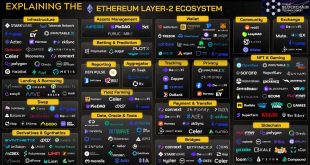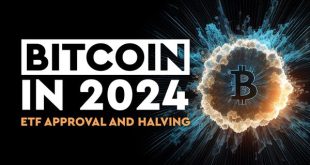Non-fungible tokens (NFTs) have revolutionized the way we perceive ownership and value in the digital realm. Emerging from the broader blockchain technology landscape, NFTs have found applications in art, music, gaming, and various other sectors. Here’s a comprehensive look at the evolution of NFTs, their current state, and future potential.
What Are NFTs?
Definition
- Non-Fungible Tokens: NFTs are unique digital assets verified using blockchain technology. Unlike cryptocurrencies such as Bitcoin or Ethereum, which are fungible and can be exchanged for one another, NFTs represent distinct items or pieces of content.
Key Characteristics
- Uniqueness: Each NFT has a unique identifier that distinguishes it from other tokens.
- Indivisibility: NFTs cannot be divided into smaller units; they exist as whole items.
- Ownership Proof: Ownership of an NFT is recorded on the blockchain, providing a transparent and immutable proof of ownership.
The Evolution of NFTs
1. Early Concepts and Development (2012-2017)
- Colored Coins: One of the earliest implementations of non-fungible tokens was the concept of colored coins on the Bitcoin blockchain, which aimed to represent real-world assets.
- Counterparty and Rare Pepes: The Counterparty platform allowed users to create and trade digital assets, leading to the creation of rare digital collectibles like Rare Pepes, which set the stage for future NFT developments.
2. Mainstream Adoption (2017-2020)
- CryptoKitties: Launched in late 2017, CryptoKitties became one of the first NFT games to gain widespread popularity. It allowed users to breed, collect, and trade virtual cats, showcasing the potential for NFTs in gaming.
- Emergence of Marketplaces: Platforms like OpenSea, Rarible, and Foundation emerged, allowing creators and collectors to buy, sell, and trade NFTs easily.
3. Art and Collectibles Boom (2021)
- Digital Art Revolution: The sale of digital artworks as NFTs gained significant attention, highlighted by Beeple’s “Everydays: The First 5000 Days” selling for $69 million at Christie’s auction.
- Celebrity Involvement: High-profile figures from various industries began creating and promoting NFTs, further popularizing the concept and attracting mainstream media attention.
4. Expansion Beyond Art (2021-Present)
- Gaming: NFTs found applications in gaming, allowing players to own in-game assets and characters. Titles like Axie Infinity and Decentraland showcased the potential for play-to-earn models.
- Music and Entertainment: Musicians and entertainers began releasing exclusive content as NFTs, offering fans unique experiences and collectibles. Notable examples include Grimes and Kings of Leon.
Current Trends in NFTs
1. Interoperability and Cross-Chain Solutions
- Multi-Chain NFTs: Projects are developing NFTs that can exist across multiple blockchain platforms, enhancing their usability and accessibility.
2. Fractional Ownership
- Shared Ownership Models: Fractionalization allows multiple users to own a fraction of an NFT, making high-value assets more accessible to a broader audience.
3. Utility Beyond Collectibles
- Membership and Access: Many NFTs now serve as access tokens for exclusive content, events, or communities, adding utility beyond mere ownership.
- Integration with DeFi: NFTs are being integrated into decentralized finance (DeFi) platforms, allowing holders to use their NFTs as collateral for loans or participate in yield farming.
4. Environmental Concerns
- Sustainability Issues: The environmental impact of NFTs, particularly those on energy-intensive blockchains like Ethereum, has sparked debate. This has led to the exploration of more sustainable alternatives and protocols.
Future Potential of NFTs
1. Evolution of Digital Identity
- NFTs could play a significant role in digital identity, allowing users to own and control their personal data and online presence.
2. Integration with Virtual and Augmented Reality
- As virtual and augmented reality technologies advance, NFTs could represent virtual goods and assets in digital worlds, enhancing the metaverse experience.
3. Mainstream Adoption in Various Industries
- Beyond art and gaming, industries such as real estate, fashion, and education are beginning to explore the use of NFTs for ownership verification, provenance tracking, and unique experiences.
Challenges and Criticisms
1. Market Volatility
- The NFT market has experienced significant price fluctuations, raising concerns about the sustainability of high valuations.
2. Copyright and Ownership Issues
- Questions surrounding intellectual property rights and the ownership of digital content continue to pose challenges for creators and collectors.
3. Scams and Fraud
- The rapid growth of the NFT space has attracted fraudulent activities, including counterfeit NFTs and phishing scams, highlighting the need for better security measures.
Conclusion
The evolution of NFTs represents a remarkable shift in how we understand ownership and value in the digital age. As the technology matures and new use cases emerge, NFTs are likely to play an increasingly significant role across various sectors. While challenges remain, the potential for NFTs to transform industries and empower creators and consumers alike is immense. As we move forward, the continued exploration of innovations and applications will shape the future of this exciting digital frontier.


